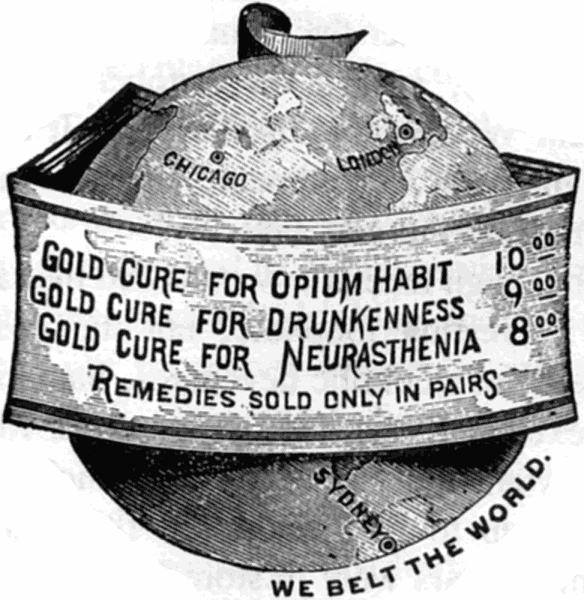The preeminent anti-addiction specialist of the late-nineteenth century was Dr. Leslie Keeley, who promised to cure addicts with injections of “gold bichloride.” It wasn’t long until copycats popped up here in Nebraska.

Nebraska was home during the late nineteenth century to a number of local Keeley hospitals or treatment centers for patients addicted to alcohol, nicotine, and narcotic drugs. Dr. Leslie E. Keeley opened the first Keeley Institute in Dwight, Illinois, in 1879, and by the 1890s every state and nearly every county had a Keeley Institute where injections of “bichloride” or “double chloride” of gold (from which the treatment for alcoholism became known as the “Gold Cure”) could work its wonders for the addicted.
The success of the Keeley institute invited imitation, and it wasn’t long before other treatment centers featuring bichloride of gold were established. Lincoln had its own institute for the cure of alcoholics and morphine addicts, organized by Dr. M. H. Garten. Dr. Garten enjoyed some success outside Lincoln. Seward had a Garten Institute in 1892 headed by Dr. J. H. Woodward, and Sacramento County, California, had a Garten Gold Cure Institute Company in 1894. Dr. M. D. Bedal’s Gold Cure Company of Blair guaranteed a “perfect and permanent cure” for addictions, according to the Omaha Daily Bee of November 15, 1891. During the early 1890s Kearney newspapers carried advertisements for the Goodson Institute in Kearney (which promoted its “Gold Cure for the Liquor Habit”) and the Grand Island Bi-Chloride of Gold Institute.
Despite its widespread popularity and the testimonials of patients, many suspected the bichloride of gold practitioners of being quacks. The Kearney Daily Hub on August 10, 1893, even reported tongue-in-cheek a new use for bichloride of gold. According to the Hub:
The trick of ‘salting mines’ has long been employed by swindlers in Colorado and other mining states and the plan of operation was pretty well understood. So generally was it practiced and known that a person who got bit was subject to ridicule rather than pity. But a new process has lately been invented by the mine salters which has deceived some of the very elect.
The plan, as near as has been found out, is to take a solution of Dr. Keeley’s bichloride of gold and with a hypodermic syringe inject it into the walls or bottom of the mine it is desired to ‘salt.’ The rock being porous absorbs the liquid readily and leaves no trace of anything except the glittering gold. The salter gets hold of a purchaser, takes him into the mine, lets him chip off what he supposes to be the ore, take it to the assayist and submit it to all the tests known. In fact the more the better, for the schemer knows the gold is there.
The result is always satisfactory in the extreme as a cent’s worth of gold in the amount of ore usually assayed under such circumstances would prove a rich mine. The purchaser is elated at the findings and the money is turned over. Work is immediately resumed in the mine but no more gold is found and the purchaser realizes when too late that he has been victimized. The writer heard of one case last week where $10,000 cash was paid for a mine that had been given ‘the jag cure’ and was not worth five cents.



